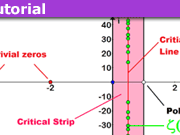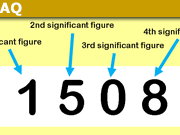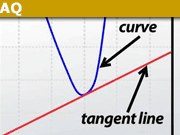What is a Parabola? A 5 Minute Introduction
Table of Contents
What is a Parabola?
A parabola is a U-shaped curve in mathematics that is defined by a specific set of points. It is a fundamental geometric shape that appears in various mathematical and real-world contexts. Parabolas have a distinct symmetry and are defined by a simple mathematical equation.
Key characteristics of a parabola include:
- Symmetry: A parabola is symmetric with respect to its axis. The axis of symmetry is a vertical line that passes through the vertex (the lowest or highest point) of the parabola. The parabola’s arms on either side of the axis of symmetry are mirror images of each other.
- Focal Point and Directrix: Every parabola has a focal point (also known as the focus) and a directrix. The focal point is a fixed point on the interior of the parabola, and the directrix is a fixed horizontal line outside the parabola. The distance from any point on the parabola to the focus is equal to the distance from that point to the directrix. This property is used in defining a parabola.
- Mathematical Equation: The standard equation for a vertical parabola is given as y = ax^2 + bx + c, where ‘a,’ ‘b,’ and ‘c’ are constants, and ‘x’ and ‘y’ are variables. The value of ‘a’ determines whether the parabola opens upward (a > 0) or downward (a < 0). If ‘a’ is positive, the parabola opens upward, and if ‘a’ is negative, it opens downward.
- Vertex: The vertex of a parabola is the point where the curve changes direction. In the case of a vertical parabola, the vertex is the lowest or highest point on the curve.
- Focus and Directrix Relationship: The distance from the vertex to the focus is equal to the distance from the vertex to the directrix. This relationship is used to define the shape of the parabola.
Glossary:
Vertex: There exists a point on the parabola, from where if a tangent to the parabola is drawn, the tangent is parallel to the directrix. This point is known as the ‘vertex’ of the parabola.
Latus Rectum: A chord of a parabola, which passes through the focus and is parallel to the directrix is known as the latus rectum of the parabola.
Axis: the line through the focus and the vertex, and therefore perpendicular to the directrix and the latus rectum. It is an axis of reflectional symmetry of the parabola and corresponds to the major axis of an ellipse.
Equations
The standard form of a parabola, with the directrix parallel to the y-axis and the origin as the vertex:
[tex]y^2 = 4ax[/tex]
In this parabola, the equation of the directrix is given as:
[tex]x = -a[/tex]
and the focus, S is given as:
[tex]S(x, y) \equiv (a, 0)[/tex]
Such a parabola is symmetric about the x-axis.
A parabola with vertex at (f, g) is given as:
[tex](y – g)^2 = 4a(x – f)[/tex]
Parametric form of a point P on a parabola is given as:
[tex]P(x, y) \equiv (at^2, 2at)[/tex]
and also,
[tex]P(x, y) \equiv (\frac{a}{m^2}, \frac{2a}{m})[/tex]
where, [itex]m[/itex] is the slope of the tangent at that point.
The equation of a tangent and the normal at a point [itex](at^2, 2at)[/itex] is given as:
[tex]ty = x + at^2[/tex]
[tex]y + tx = 2at + at^2[/tex]
Extended explanation
Alternative definitions for a parabola:
i] A parabola is a conic section with eccentricity [itex]e = 1[/itex].
ii] cited from Wikipedia:
[quote]In mathematics, the parabola (pronounced /pəˈræbələ/, from the Greek παραβολή) is a conic section generated by the intersection of a right circular conical surface and a plane parallel to a generating straight line of that surface.
[/quote]
iii] A Parabola is the limiting case of an ellipse with one focus at infinity.
Parabolas and gravity:
A projectile in a uniform gravitational field follows a parabola (unless moving vertically). A ball thrown into the air at an angle is an example of projectile motion. The ball follows a parabolic path.
The Earth’s gravitational field is of course spherical, not uniform, and so a projectile follows an ellipse, but the difference is so small that, over short distances, the ellipse is indistinguishable from a parabola.
A projectile moving at escape velocity (in any direction) in a Newtonian spherical gravitational field follows a parabola (unless moving vertically). A projectile moving more slowly follows an ellipse, and a projectile moving faster follows a hyperbola.
NOTE: A hanging chain, or hanging string having mass, does not trace a parabolic arc, as it is commonly assumed. The shape it traces is a catenary. The main chain of a suspension bridge, however, which supports a mass uniformly distributed horizontally, traces a parabolic arc.
Common encounters with a paraboloid:
A paraboloid is a surface obtained by rotating a parabola about its axis.
i] The surface of a fluid in a rotating vessel is (part of) a paraboloid.
ii] Most reflecting telescopes have paraboloid mirrors (“parabolic mirrors”) because light from a very distant object (effectively “at infinity”) on the axis of the telescope is focused onto … the focus!
See also https://www.physicsforums.com/threads/what-is-the-equation-of-a-circle.762871/ and https://www.physicsforums.com/threads/what-is-a-conic.762859/
This article was authored by several Physics Forums members with PhDs in physics or mathematics.










Leave a Reply
Want to join the discussion?Feel free to contribute!